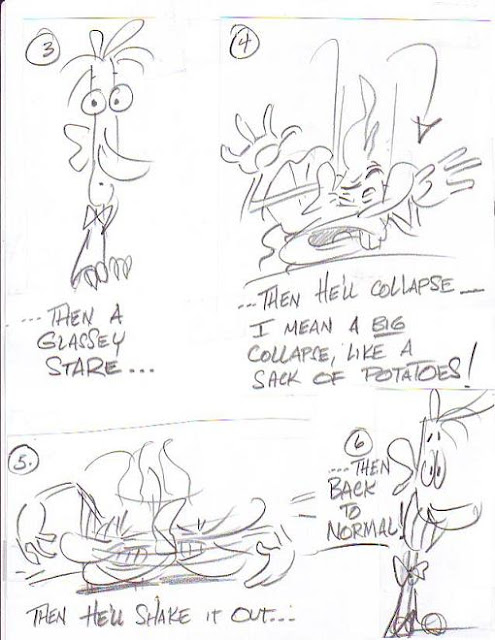 I don't know why so many people hate fast food restaurants. I understand why they got a bad reputation early on when they were crowded and noisy with plastic seats, but that was then and this is now. My local Carl Jr.'s is quiet and comfortable and the food isn't bad if you know what to order. Anyway, yesterday I finally convinced my food snob friend Mike to try it.
I don't know why so many people hate fast food restaurants. I understand why they got a bad reputation early on when they were crowded and noisy with plastic seats, but that was then and this is now. My local Carl Jr.'s is quiet and comfortable and the food isn't bad if you know what to order. Anyway, yesterday I finally convinced my food snob friend Mike to try it. I guess I picked the wrong day because the restaurant was full of mentally challenged people with carts filled with teddy bears and "Lion King' memorabelia. There must have been a convention nearby. They were all shouting incoherently and of course they all seemed to gravitate to Mike.
I guess I picked the wrong day because the restaurant was full of mentally challenged people with carts filled with teddy bears and "Lion King' memorabelia. There must have been a convention nearby. They were all shouting incoherently and of course they all seemed to gravitate to Mike.
I forgot that using a door is a learned skill. A man who hadn't learned it yet came to the door, saw his friends inside, but couldn't get in because a slab (the door) was in the way. After making a few tentative little pushes he opened the door about 20% of the way, then tried to squeeze in through the narrow opening. The door, which had a normal amount of spring tension, gently began to close on him, pinning him there by the shoulders. The man painstakingly turned sideways to get more room but the door closed on him in that position too, forcing him to wheedle through sideways, like a crab. I'm embarrassed to say that I was so suprised by what I was seeing that I forgot to offer to help. Besides I was distracted by a little kid who was trying to hit Mike on the head with a DVD box.
I also forgot that using a cup is a learned skill. A man settled into a booth with a cup of coffee and looked wistfully out the window. Nothing wrong with that, just a citizen enjoying a cup of coffee. "Ah!" you could almost hear him thinking, "Life is good!" He took a sip then went to take another sip and was shocked to discover that the cup was empty. He looked at the kitchen angrily then got up and filled it again. Back in the booth he took another long, relaxed sip. "Aaaaah!", you could hear him think, "That's good!" But wait a minute! When he went to take a another sip nothing was there! What kind of restaurant are they running here? Once again he angrily looked at the kitchen then went up and got more coffee. This went on and on, with him looking suprised that he had nothing in his cup then filling it with only one sip's worth of coffee. Once again I didn't offer to help because the kid was back hitting Mike with the DVD box again.
I should add that Mike was sitting close to the aisle. Every time the coffee man passed he would fart next to Mike's head. And when I say "passed," I mean passed in both directions. Mike would get a fart in his face on the guy's way up to the counter and a fart in the face on the guy's way back.
I suggested to Mike that we slide farther in on our seats so we could get away from the aisle but when we did that the woman in the booth behind us cast a murderous stare at Mike, probably thinking that he was the father who abused her and now deserved to be stabbed. Regretfully we slid back to the aisle where Mike was promptly farted on.
I suggested to Mike that we slide farther in on our seats so we could get away from the aisle but when we did that the woman in the booth behind us cast a murderous stare at Mike, probably thinking that he was the father who abused her and now deserved to be stabbed. Regretfully we slid back to the aisle where Mike was promptly farted on.



















